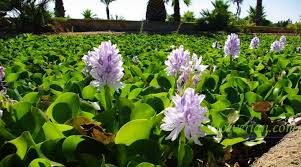 |
| eceng - www.healthnote25.com |
Eceng,
eceng paddy or wewehan is a kind of water plants that used to be weeds in rice
field area. The scientific name is Monochoria vaginalis. This plant has
different names in every region in Indonesia.
you pepper or the corpuk is
Monochoria vaginalis designation in the Batak area; Betawi people call it ecèng
rice; the Sundanese call it ecèng leutik or ecèng lĕmbut; the Javanese call him
wéwéhan, wéwéyan, bĕngok; the Balinese call it wéwéhan, biah-biah; the Lombok
people call mĕmadèng, mĕmarèng, the Makassarese call it balang and the Bugis
call it balĕmpalĕng. In Minahasa the name is tumpng.
Although the famous wewehan
as a weed, this plant also has benefits for human life. The wewehan leaves can
be used for cooking into vegetables. Rumphius reported that the balang (he
wrote this as balla balla) in Makassar in the past was eaten as a vegetable,
raw or cooked; while Heyne noted that in Bogor eceng leutik eaten only after
steamed first. The wewehan leaves contain fiber which is good for digestion.
Eceng root can be used to
treat stomach disease, liver, shortness of breath and toothache; while the
leaves are for fever medicine. The finely ground leaves of wewehan can be used
for abdominal pain medication. All parts of the plant can also be used for
animal feed. Extracts of eceng-eceng have been studied can be used as a snail
pest killer (Pomaceae canaliculata L.) which often damage rice plants in rice
fields. The dried wewehan rods can be utilized to make various handicrafts.








0 Comments:
Post a Comment